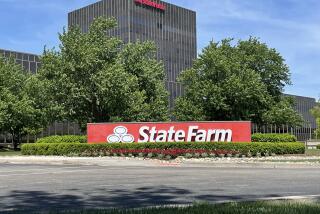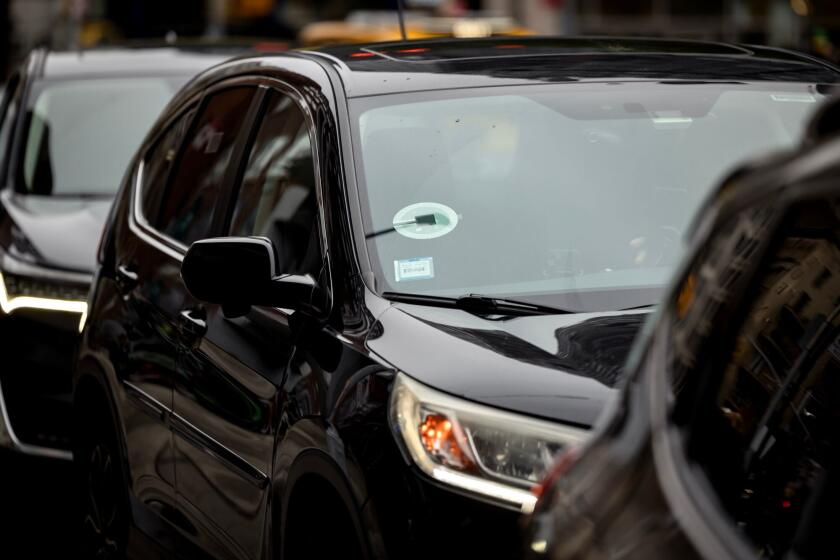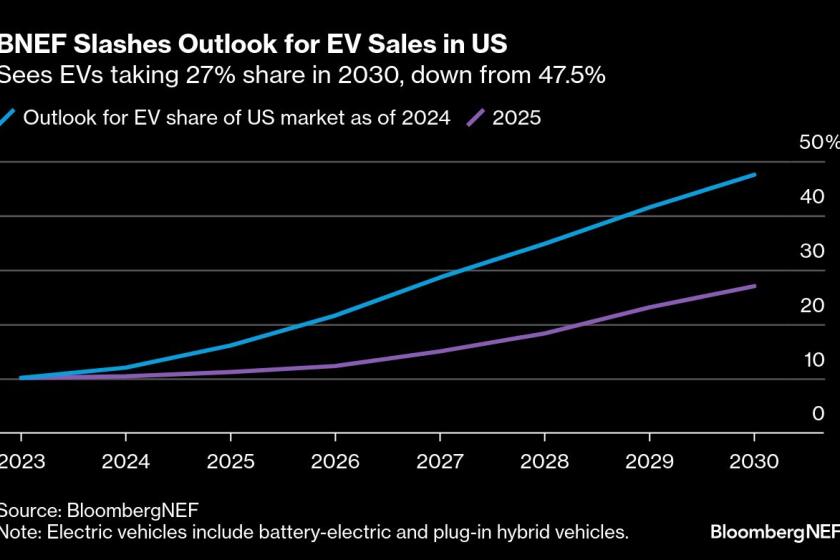All Suburbs Not Alike to Car Insurers : Prop. 103: Redlining is outlawed. Pricing levels will vary from one suburb to another. But some changes may come as a big surprise.
- Share via
When is a suburb not a suburb? Answer: When it comes to setting auto insurance rates in the areas around the urban core of Los Angeles.
In releasing new pricing regulations last week to implement Proposition 103, state Insurance Commissioner Roxani Gillespie predicted they would mean premium cuts for urban areas and limited increases for suburbs.
But when auto insurers set their prices, not all suburbs will be treated the same.
Most drivers living in areas that now have the highest auto insurance prices--including the Westside, Inglewood, the southern parts of the San Fernando Valley and most of the South and East sides of Los Angeles--should see some rate relief.
Insurance experts say drivers in less populous areas of Los Angeles County, such as the Antelope Valley, will probably experience some small rate increases when insurance companies prepare new pricing plans in accord with Gillespie’s new regulations.
But there is still a big question in many outlying suburbs--the far reaches of the San Gabriel and San Fernando valleys, the South Bay area, Pomona Valley and the Simi and Santa Clarita valleys--whether most drivers will receive increases or decreases.
Gillespie’s regulations interpreting Proposition 103 strike down consideration of sex and marital status as well as a driver’s ZIP code in setting insurance prices. Instead, a driver’s safety record, annual miles driven and years of driving experience, in that order, will become the most important factors in pricing auto insurance.
But the picture is complicated by Gillespie’s listing of 25 optional pricing factors, some of which insurers could use as substitutes for neighborhood-based or gender-based pricing.
For instance, by calculating such things as population density, vehicle density, theft rates and litigation rates, insurers could still be able to charge a driver according to where he or she lives. In measuring miles driven, and even accident rates, insurers may be able to find substitutes for gender factors in assessing claims and setting premiums, since males tend to drive more and have more accidents than females.
Another major complication in an extremely complicated situation is that Gillespie has told insurers that, except in cases of drivers with poor safety records, rates cannot increase more than the Consumer Price Index, a measure of inflation. This, in effect, will limit most increases in 1990 to 5%.
Rather than seeing their overall revenues drop, insurers may be inclined to calculate the rating factors in such a way as to give urban drivers as little of a decrease as possible. Under the new system, such drivers would be expected to get some of the highest decreases.
All of this presumes that Gillespie will prevail in court, where insurers are expected to challenge the regulations.
Assuming the regulations do stand and are allowed to become permanent, what is in store for the Los Angeles region?
It is easy to conclude that most drivers now paying the highest rates--in South Central and East Los Angeles, Hollywood, Inglewood, Beverly Hills, Westwood, Santa Monica and Sherman Oaks--will get some decrease. The regulations are designed to benefit them the most. Gillespie has said these drivers will still pay more than drivers in outlying areas, but the comparative difference in their rates will narrow.
There will be some exceptions to this. For instance, a resident in these areas who drives a lot each year, say 20,000 miles or more, and has not had years of driving experience may be hit with higher rates.
Those who would benefit the most are experienced middle-aged or elderly drivers who don’t drive many miles each year and now pay extremely high rates because they live in a central city ZIP code.
It seems fairly apparent that most of those living in the Antelope Valley, who now pay the least for auto insurance in Los Angeles County, would pay more. But the increase couldn’t be more than about 5% unless their record of accidents and traffic violations is bad. In that case, such drivers may pay a lot more. In fact, that will be true no matter where such drivers live.
The great uncertainty will come for drivers living between the highest priced and lowest priced areas. That includes millions of people.
Steven Miller, the consumer advocate who has become a paid consultant working with Gillespie to interpret Proposition 103, pointed out last week that many of the optional factors the commissioner will allow insurers to use as a substitute for a driver’s home address or ZIP code cannot be calculated by ZIP code or by the present insurance pricing territories.
For instance, litigation rates can be measured only by judicial district, Miller said, and these districts are much bigger than most ZIP code territories the companies are using now to calculate rates.
Take the case of a driver living in an outlying area of the San Gabriel or San Fernando valleys who has been benefitting under the present system from a considerably lower rate than a person living closer to the central city, even within these valleys. When the litigation factor is considered, such a driver may be lumped in with the persons living further in, possibly bringing rates up.
Population density, similarly, is likely to be measured by census tract. Those tracts are likely to vary from the present insurance territories, resulting in another kind of readjustment.
In August, Gillespie calculated what would happen if she simply ruled out neighborhood-based pricing without providing any substitute pricing factors, and without limiting price increases. She estimated prices would decline by about 3% in Burbank, 16% in Canoga Park, 18% in Santa Monica, 20% in central Los Angeles, 22% in Sherman Oaks and 47% in Beverly Hills.
At the same time, she estimated prices would increase 3% in Palos Verdes, 5% in Glendale, 12% in Pasadena, 14% in Redondo Beach, 15% in Torrance, 18% in El Segundo, 20% in Whittier and Downey, 22% in West Covina, 25% in Norwalk, 27% in Saugus and 57% in Palmdale.
But now, because she has limited the rate of increase to the Consumer Price Index for the previous year and because she has introduced the substitute factors, all of these calculations are no longer valid.
The price swings are going to be far narrower. And the ultimate outcome on rates is far from clear, particularly in the areas Gillespie cited for small increases or decreases.
Gillespie and the special attorney who drew up the regulations, Karl Rubinstein, say the regulations are not designed to be revenue neutral. They envision the companies receiving somewhat smaller total revenues than they now do.
But the companies are expected to calculate the new premiums in such a way as to be as close to revenue neutral as possible, giving them as much in total premiums as they get now. It would then be up to Gillespie to reject them if she finds them unsatisfactory.
In the meantime, some observers think that when the companies come up with their new rates, they will propose increases to as many drivers as possible by the maximum 5% or so, while offering cuts to as few as possible. If that is the strategy, many of those living in the areas in between the central urban neighborhoods and the rural valleys could find themselves charged slightly more.
Each company will make its own separate calculations of the pricing factors Gillespie has allowed, in terms of claims expected and the degree of risk. So drivers carrying their insurance with one company may find themselves treated quite differently, in terms of their rate adjustments, from drivers carrying their insurance with another.






